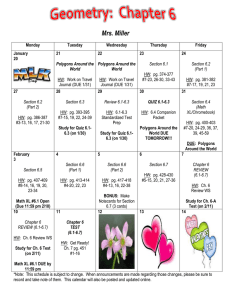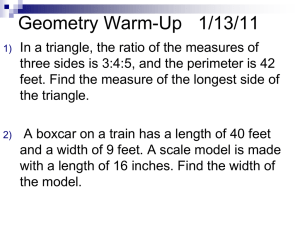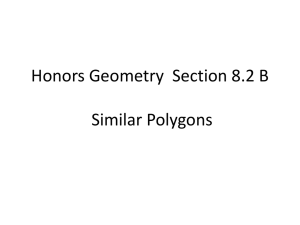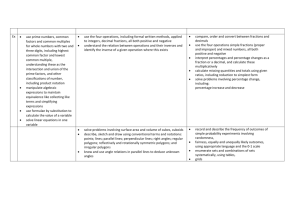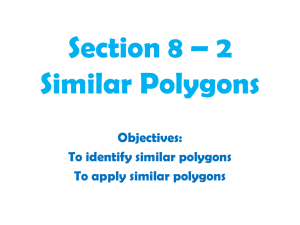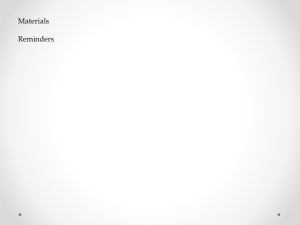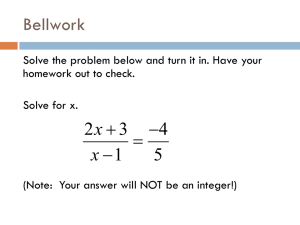Algebra/Geometry Institute Summer 2003
advertisement
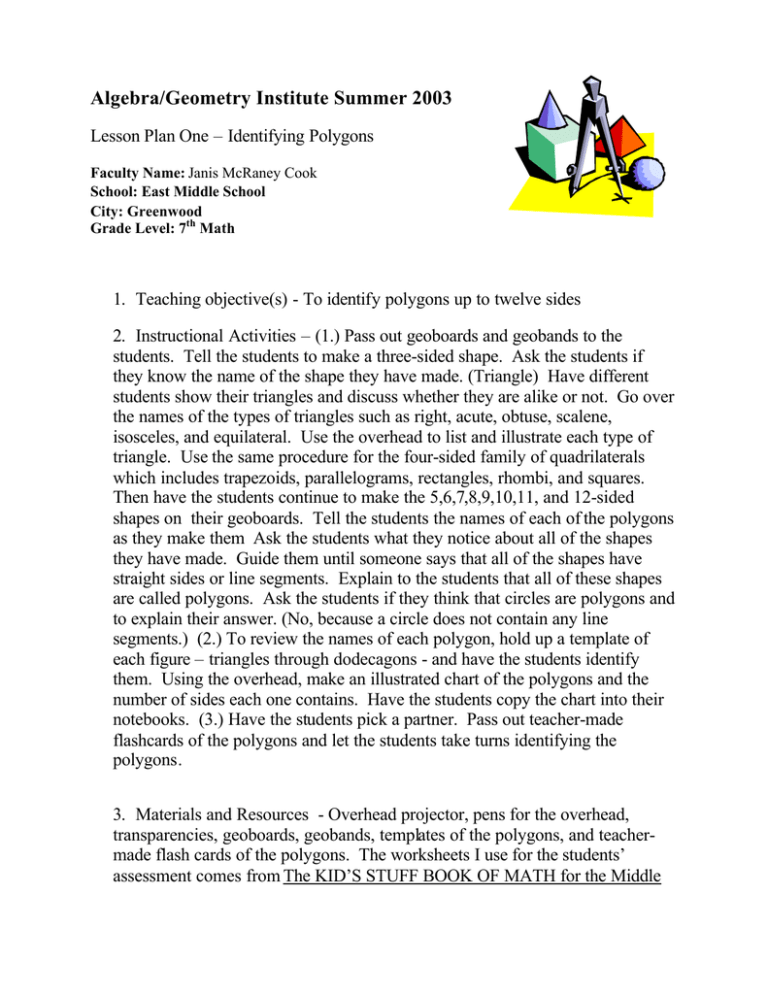
Algebra/Geometry Institute Summer 2003 Lesson Plan One – Identifying Polygons Faculty Name: Janis McRaney Cook School: East Middle School City: Greenwood Grade Level: 7th Math 1. Teaching objective(s) - To identify polygons up to twelve sides 2. Instructional Activities – (1.) Pass out geoboards and geobands to the students. Tell the students to make a three-sided shape. Ask the students if they know the name of the shape they have made. (Triangle) Have different students show their triangles and discuss whether they are alike or not. Go over the names of the types of triangles such as right, acute, obtuse, scalene, isosceles, and equilateral. Use the overhead to list and illustrate each type of triangle. Use the same procedure for the four-sided family of quadrilaterals which includes trapezoids, parallelograms, rectangles, rhombi, and squares. Then have the students continue to make the 5,6,7,8,9,10,11, and 12-sided shapes on their geoboards. Tell the students the names of each of the polygons as they make them Ask the students what they notice about all of the shapes they have made. Guide them until someone says that all of the shapes have straight sides or line segments. Explain to the students that all of these shapes are called polygons. Ask the students if they think that circles are polygons and to explain their answer. (No, because a circle does not contain any line segments.) (2.) To review the names of each polygon, hold up a template of each figure – triangles through dodecagons - and have the students identify them. Using the overhead, make an illustrated chart of the polygons and the number of sides each one contains. Have the students copy the chart into their notebooks. (3.) Have the students pick a partner. Pass out teacher-made flashcards of the polygons and let the students take turns identifying the polygons. 3. Materials and Resources - Overhead projector, pens for the overhead, transparencies, geoboards, geobands, templates of the polygons, and teachermade flash cards of the polygons. The worksheets I use for the students’ assessment comes from The KID’S STUFF BOOK OF MATH for the Middle Grades by Marjorie Frank, copyrighted 1988 by Incentive Publications, Inc., Nashville, Tennessee, pages 134 and 135. 4. Assessment – Informal evaluations of the students’ abilities to identify the polygons will be made as the different activities are completed. The worksheets titled “Which Figure is Which?” and “Where Has Polygon?” will be used for the formal assessment. (The Kid’s Stuff Book of Math for the Middle Grades by Marjorie Frank, copyrighted 1988 by Incentive Publications, Inc., Nashville, Tennessee, pages 134 and 135.) EXAMPLES OF FLASHCARDS Triangle Front of Card Back of Card Square Front of Card Back of Card

